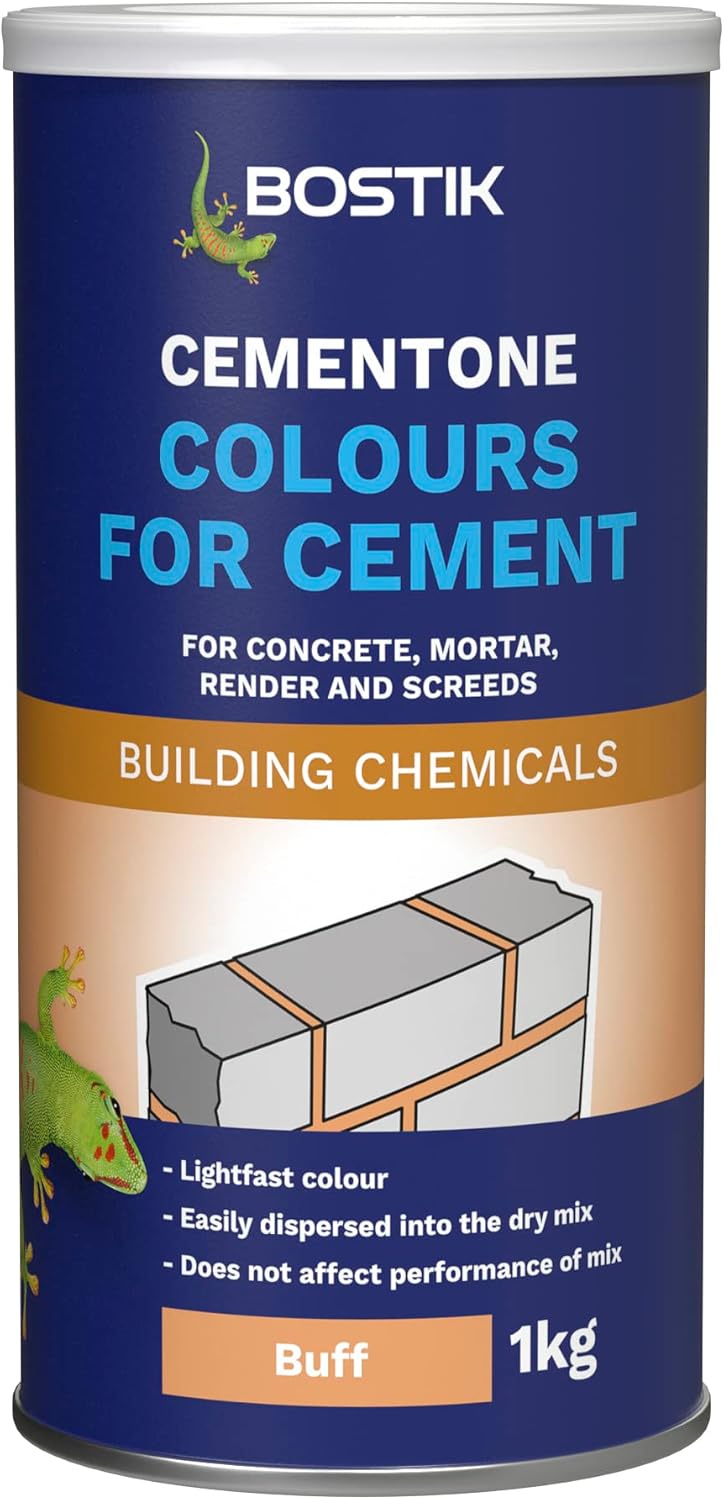
Bostik Colours for Cement, For Concrete, Mortar, Render and Screeds, Available in 5 Intermixable Colours, For Interior and Exterior Use, Colour: Buff, Size: 1kg
FREE Shipping
Bostik Colours for Cement, For Concrete, Mortar, Render and Screeds, Available in 5 Intermixable Colours, For Interior and Exterior Use, Colour: Buff, Size: 1kg
- Brand: Unbranded

Description
Concrete mix coloured grey due to colour of the cement used What Other Factors Affect Mortar Colour?
Once your new mortar has dried it will change colour very slightly. This may be even more evident over a large area Now, pour your sand solution gently over the top. The tights will act as a sieve, allowing the remaining water/acid solution to drain off, leaving you with just your sand. Get in touch with any local historians or custodians of local monuments or historic buildings as it is likely that they will know exactly where the majority of original materials used were sourced from.
What concrete additives and mortar additives do we have available?
The next part is a waiting game! You will need to leave the solution for 2-3 days for the Muratic Acid to get to work on the on the cement and dissolve it (and also any lime that may also be present). You can now take this container to your local DIY sheds, builders merchants or other locations that sell sand so that you can compare it and hopefully get a close if not exact match. With your sample to hand place them on an old scrap piece of wood. Using a similar scrap piece of wood, place this on top and use it to grind the mortar down. In this project guide we go through what’s involved with matching mortar colours, read on to find out how. Why Match Mortar Colours? One thing to be aware of is that it is important to mix the dye into the cement before you add the water.
Similar to the way in which lime can significantly lighten the colour of mortar, as you may imagine, using white cement has the same effect. If you cannot locate the sand then talk to the builders merchants and even the local quarry to find out how many local building sands there are available. If you have read through the above you should now know exactly why mortar can vary in colour and how a fresh mortar mix can be a totally different colour to existing mortar, it’s now time to look at the methods that can be used to actually colour match cement and mortar. Experiment With Different Mortar Mixes and Raw Materials As we have mentioned, as the sand used in a mix makes up the bulk of the actual mix itself, it has the greatest effect on the overall colour, so to get a good match, it’s really essential to identify it.
Another factor that can alter the colour of mortar is whether lime was used in the original mix. As lime is naturally light in colour and is often used in place of cement in some mixes, mortar created using lime can look very light in colour and in some cases be nearly white. If you are working with lime then you will also need to do the same, but with lime you will only be working with ratios between 3:1 (3 sand to 1 lime) and 5:1 (5 sand to 1 lime). If you know the age of your property and its pre-1900’ish then the chances are it may feature a lime-based mortar, especially if it is light in colour. Before we actually start looking at mortar and cement colour matching techniques, it’s important to understand exactly why mortar and cement colours can vary so drastically.
Please find some colour examples from the pictures below. More will be added soon. Colours may vary depending on many factors such as the brand of cement used, the colour of sand used, the ratio's of stone and sand used etc. Computer monitor settings and angle at which you view your monitor will also lighten or darken the colour shades. So please use this chart as a guide only. However, if the mortar is very light in colour then this suggests that either a white cement (aka Snowcrete) or lime has been used.
Why is Some Mortar a Different Colour to Others?
You now need to drain off your sand solution. Using a container with a fairly large mouth that can again be sealed, stretch an old pair of tights over the mouth and secure it with a strong elastic band. But with a 4:1 mix and standard Blue Circle cement, both come out largely grey (the golden sand comes out a lighter grey). Aside from the techniques we have run through above for extracting sand from the original mortar, which is very effective by the way, you can also undertake some local research. The key to this whole process is consistency with the mix ratio. If you have a lot of pointing or repair work to do then to maintain a consistent colour match from your first mix to your last, everyone has to be the same.
- Fruugo ID: 258392218-563234582
- EAN: 764486781913
-
Sold by: Fruugo
